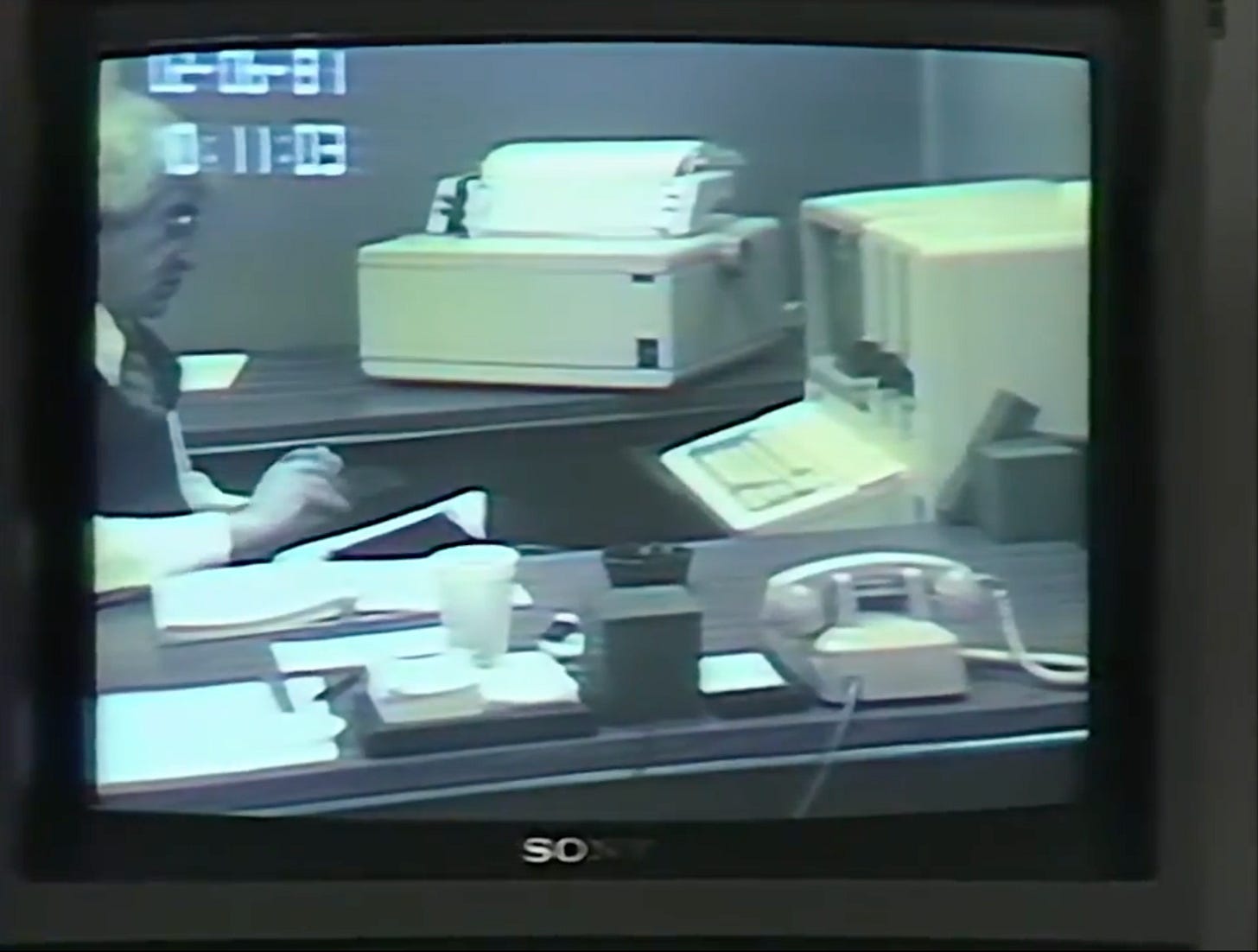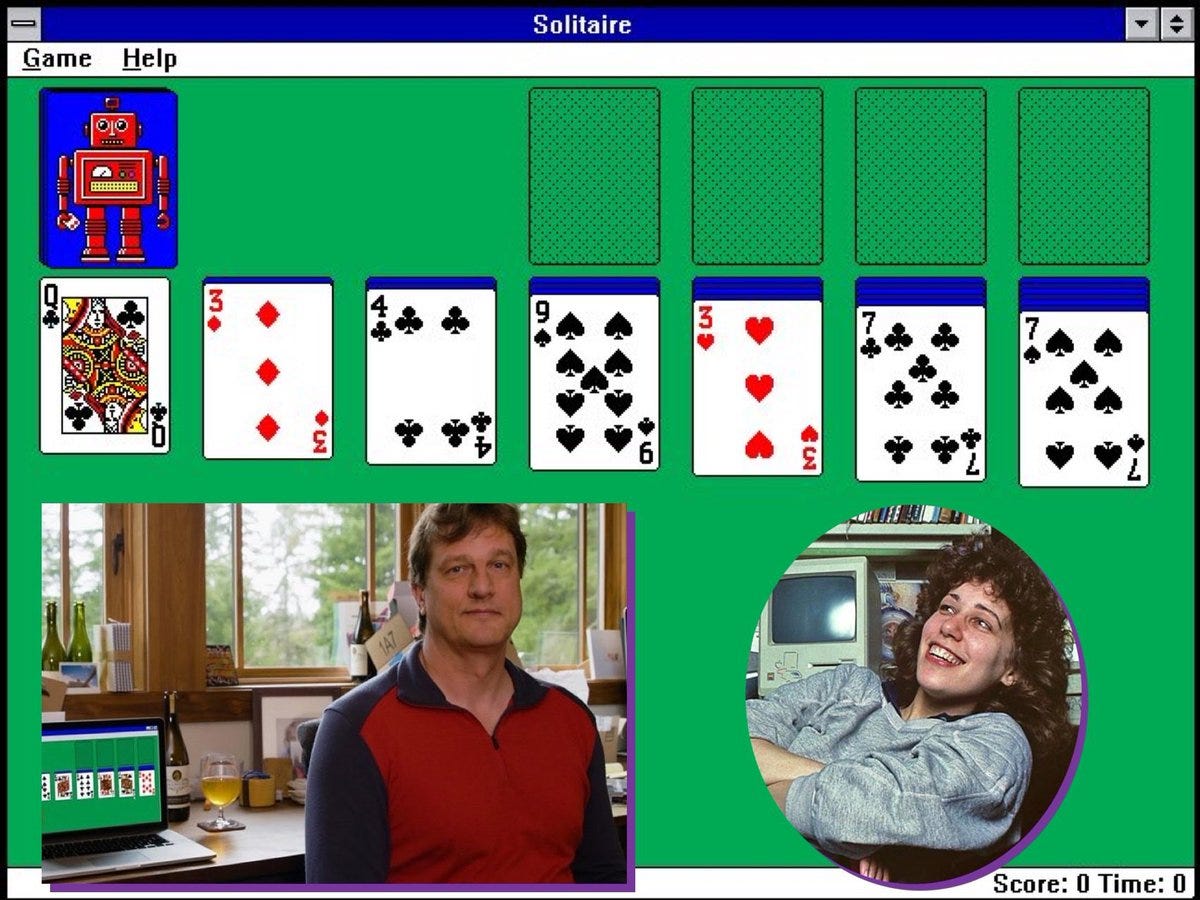A 41 year-old read-out and the true purpose of Microsoft Solitaire
A special link-fest edition of The ¼" Hole

It’s conference season! Not long ago, we had UX Insight, UXDX, and CHI. But few months have been as packed as June.
In just the past few weeks, the good folks at Learners put on a veritable blitz of conferences with UXRConf, ReOpsConf, DesignConf, and Good Research all back-to-back. Then, concurrent to all that, we’ve had Quant UX Con and SaaStr Europe. And this week there’s UXPA!
Hopefully, you’ve had a chance to participate in one or two of these. Personally, I’ve helped to organize UserZoom’s sponsored local Denver watch party for Quant UX Con, and I’m headed now to San Diego to present some work I did with my colleague Jamie Skjoldager. (Please say hello if you’re around!)
But amidst all the excitement, I (for one) could use a breather. So we’re taking a brief interlude: a special link-fest edition of The ¼" Hole. Sit back, relax, and queue up some tabs for your reading breaks between conference sessions.
Next month, we’ll pick up where we left off in our series on scaling UX research to meet demand (ICYMI: Part 1 and Part 2).
A 41 year-old usability test read-out at IBM (YouTube)
The presentation slides are advanced by hand using a projector, the highlight reel is played on a VHS player, and some of the early-80s language may be offensive to modern sensibilities. But other than that, it’s remarkable how much the content of this read-out aligns with the ones we give today.
“Turn a sea of data into data you can see” (Twitter)
Also file this under “plus ça change”: a fascinating and gorgeous (despite the excessive use of dubious 3D) dive into examples of chart-generation software spanning 1982–1992. The interface and outputs are surprisingly mature.
As professors struggle to recruit postdocs, calls for structural change in academia intensify (Science)
Add these anecdotes to the pile of evidence for a mass exodus from academia: several stories of very small candidate pools for postdocs that only a few years ago were extremely competitive.
Why? The widespread pivot to remote work opened up lots of opportunities in tech (like UX research) that were previously locked away:
Many faculty members expressed sympathy for the situation academic postdocs are in and acknowledged they should be paid more. But they also said that in many cases they feel their hands are tied.
Best Font for Online Reading: No Single Answer (Nielsen Norman Group)
Although it’s not necessarily grounded in evidence, there’s a lot of conventional wisdom about what types of fonts make for the best reading experience in a given context. Jakob Nielsen summarizes the findings of researchers at Adobe, who conducted a reading speed study with 16 different fonts.
Readability: The Optimal Line Length (Baymard Institute)
The folks at Baymard share a lit review and large scale replication of past work on another evergreen question: how many characters should you have per line? They recommend 50–75.
Card sorting: how many participants do you really need? (UX Psychology)
Maria Panagiotidi summarizes research going back nearly 20 years and arrives at a helpful rule of thumb: 15 participants, unless the stakes are particularly high — in which case, you can just double it.





One Weird Trick To Make Humans Think An AI Is “Sentient” (Medium)
Clive Thompson describes the recent controversy around LaMDA, a chatbot based on an AI language model, that some believe has achieved self-awareness. (See also the Twitter thread linked immediately above.)
He argues that the AI is nothing more than “superpowered autocomplete” — but it can still trigger a sense of connection and personality by appearing to show vulnerability.
Microsoft Solitaire Solitaire as a low-stakes WIMP tutorial (Wikipedia)
h/t @wowstartsnow: “Disguised as a game, the goal of Microsoft Solitaire was to familiarise new Windows users with the mouse, by encouraging them to click, double-click & drag.1 It was developed by Wes Cherry for Windows 3 (1990), with card decks designed by Susan Kare.”
Another nugget from the Wikipedia article: “Cherry's version was to include a ‘boss key’ that would have switched the game to a fake Microsoft Excel spreadsheet, but he was asked to remove this from the final release.”
A career-raising gig: an entry-level UXR apprenticeship (Lyft)
The UX team at Lyft is seeking folks for their UX Research Associate program, who are passionate about research and wanting to transition into the field, but lack formal training or experience in the field. I have no connection with this role, but it’s a cool and unfortunately rare opportunity that I am happy to signal-boost.
I got interviewed for the Design Leader Insights series (Fuego UX)
Alex Smith of Fuego UX and I had a great conversation on UX research. Some of the topics we covered include: research during different phases of development, what do when there isn't a dedicated UXR on the team, and advice for folks transitioning into the field. Check it out!







